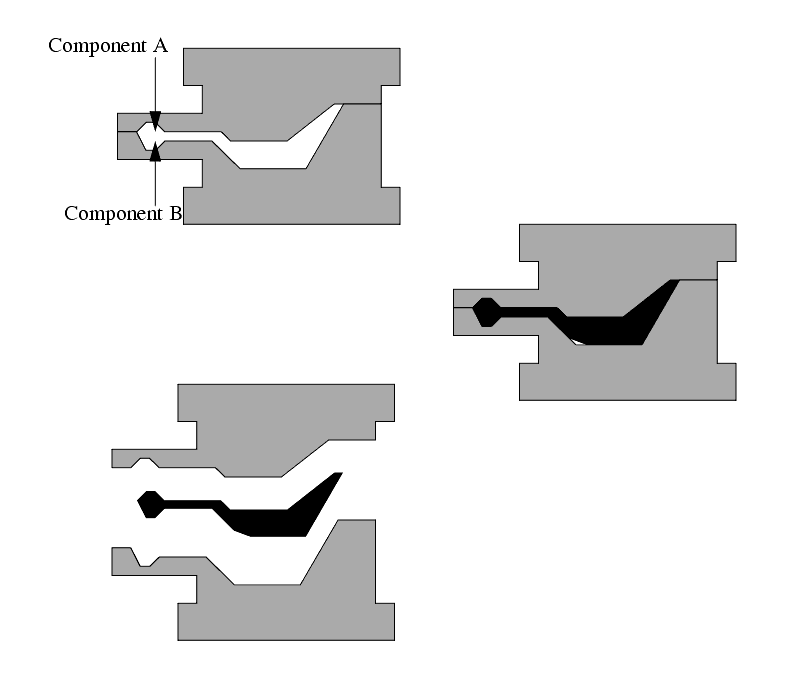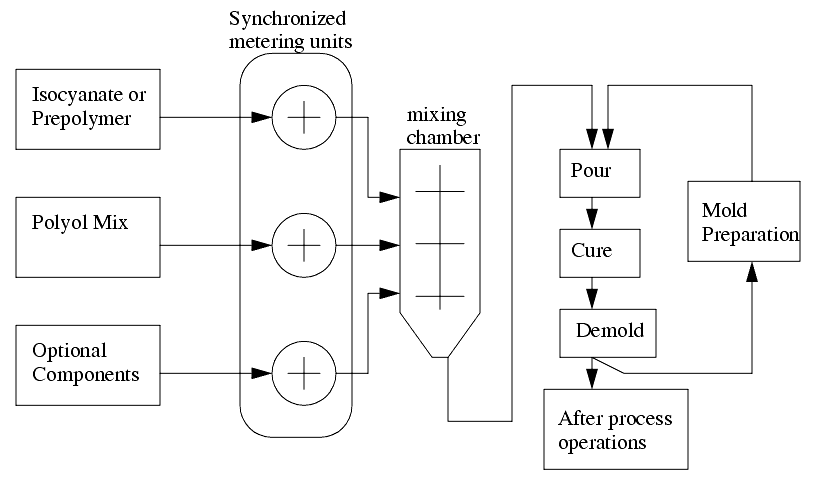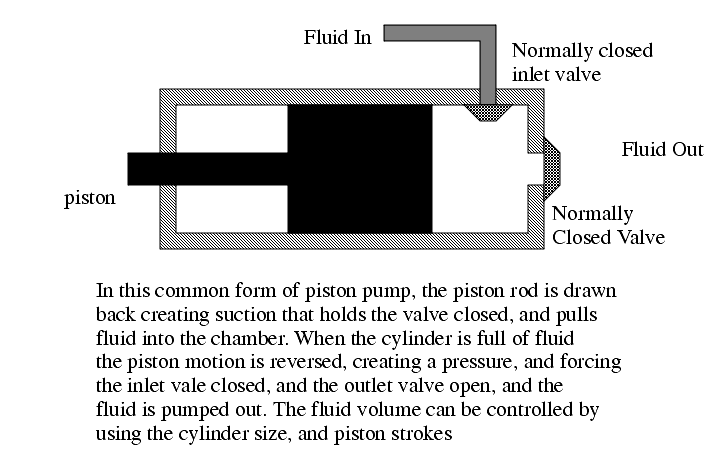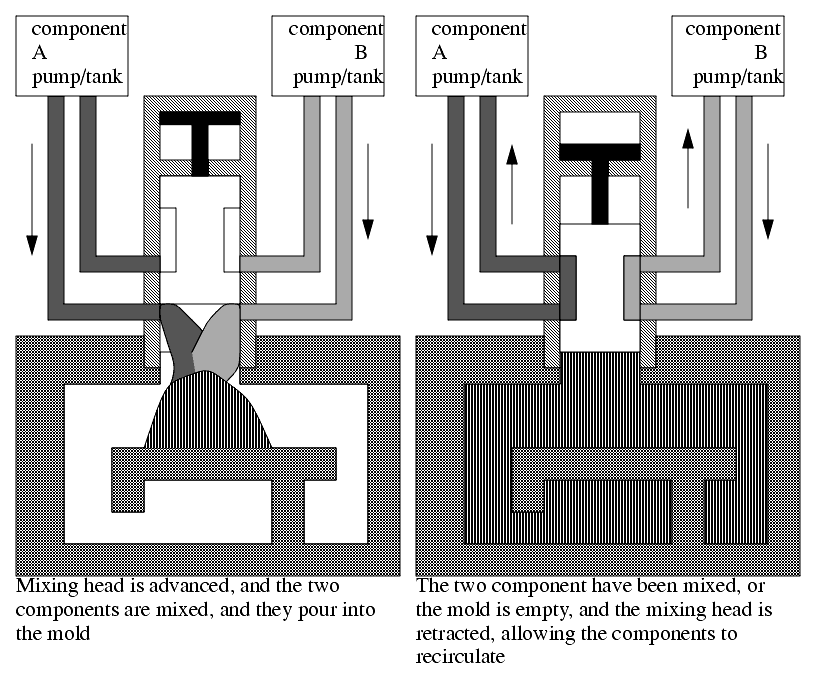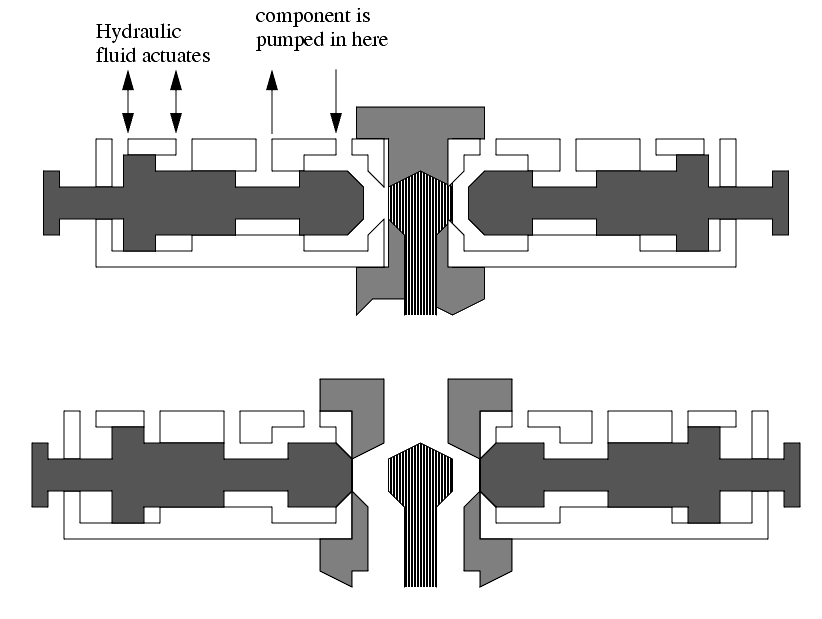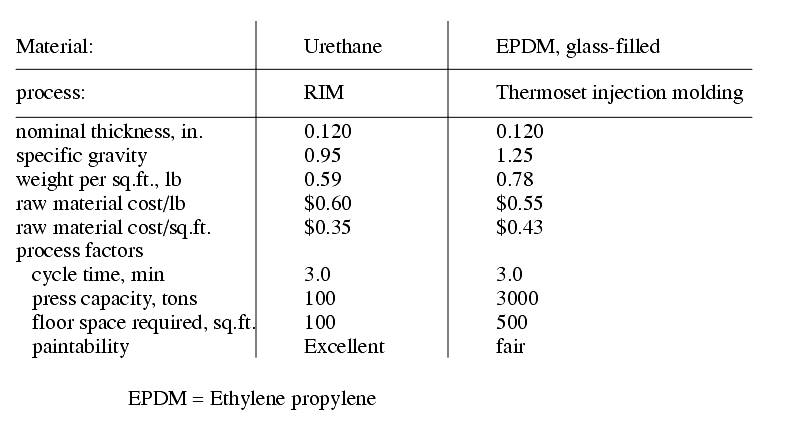46.1 REACTION INJECTION MOLDING (RIM)
������������
Basic Principle - A mold is brought together, and a multipart thermosetting polymer is mixed and injected. After the part sets, the mold is opened, and the part is removed. Post curing may be used.
Features:
- Very little energy is required, most energy is provided by the chemical reaction.
- Parts up to 100 lb produced.
- Surfaces don't have flow lines found in traditional injection moulding.
- RIM materials tend to be low weight, corrosion resistant, and variable properties can be obtained by additives and ratio adjustment.
- RIM machines use lower pressures, and are therefore less expensive.
- Typical parts are; bus bumpers, large electronics cases, shoes, etc.
- Fillers can be used to increase strength.
- The basic process involves mixing the raw components.
Metering and mixing are critical
- special metering pumps are required for the components to maintain material properties.
- mixing must thoroughly mix the components at high speed, and inject them without becoming clogged when the mixture sets.
While the previous mix head is for a runnerless system, it is also common to have an extra component that is between the mix head and the part (the runner).
An aftermix may also be used to increase mixing. A typical design will split the stream and cause it to impinge at 180°, then continue on to the mold.
A comparison of the materials shows the advantages over a similar injection molded material.
46.1.1 References
������������
Becker, W. E., editor, Reaction Injection Molding, Van Nostrand Reinhold Co., New York, 1979.

